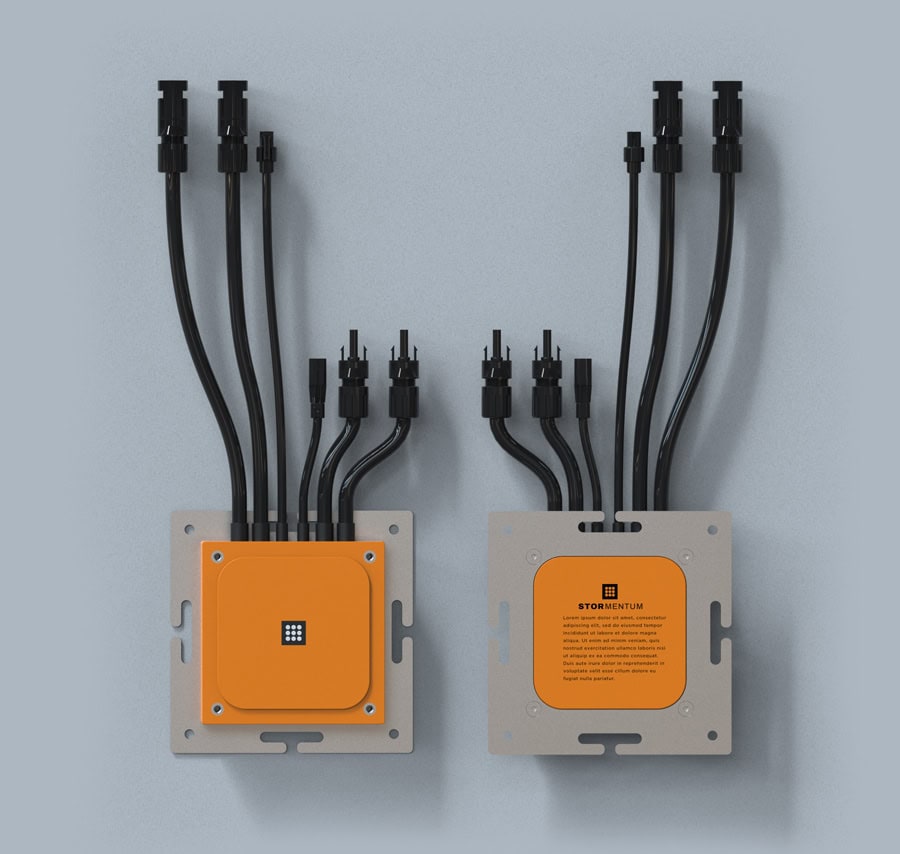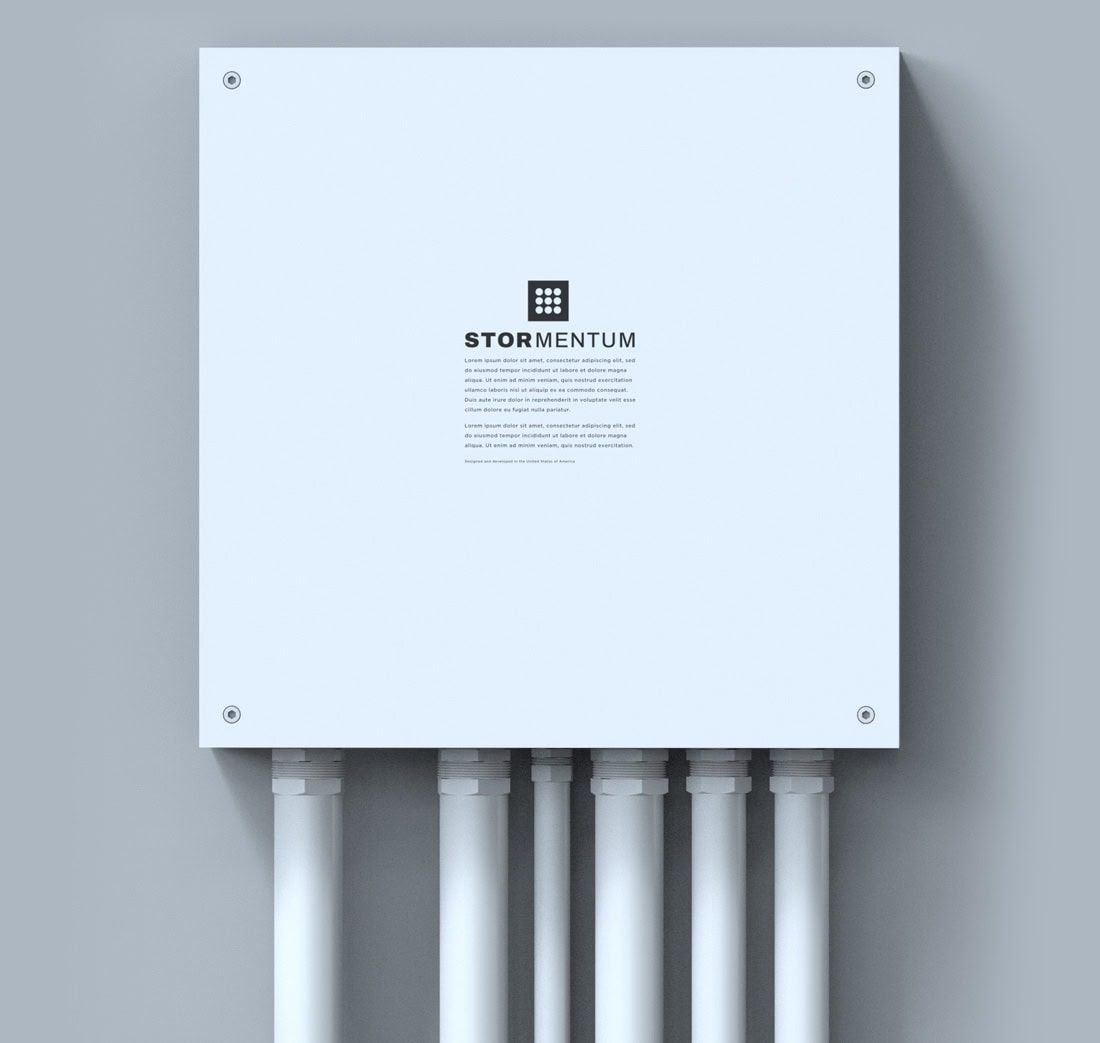At the heart of the platform is Stormentum's cellular inverter architecture—a distributed system built around three integrated components
Cell

Compact, modular power processors that mount behind each panel, performing module-level MPPT and monitoring—using standard PV wire and MC4 connectors.
- 400 W per Cell — combine multiple Cells to scale system power
- Module-level MPPT and performance monitoring
- Mounts to solar module frame or racking
- Uses standard PV wire and MC4 connectors — no proprietary cabling
Core

A centralized power hub that eliminates the need for separate string inverters or battery inverters, supporting direct integration with your choice of batteries.
- 11.52 kVA @ 120/240 Vac — supports grid export and whole-home loads
- 260 A continuous DC port for direct battery integration
- Contains control, communications, rapid shutdown, DC & AC interconnection
- Wall-mounted form factor with multiple conduit entry points
Software

Intuitive tools for fast commissioning, diagnostics, and system insights—designed for how installers actually work.
- Intuitive mobile and browser-based interface
- Automated commissioning workflow with step-by-step verification
- Real-time system performance monitoring and diagnostics
- Time-of-use optimization and backup preparation modes
- Installer and homeowner-specific views with appropriate controls
- API integration with third-party energy management systems
